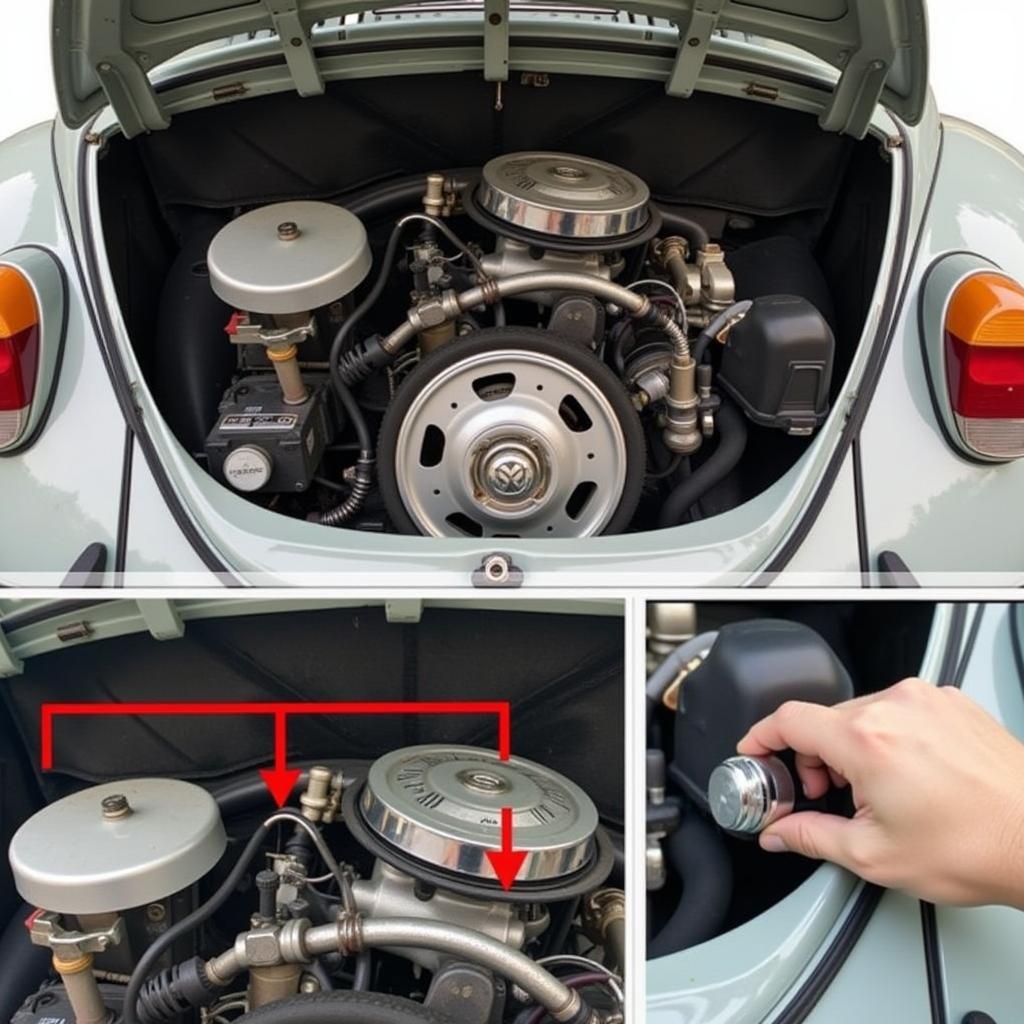The brake warning light circuit is an essential safety feature in your vehicle, alerting you to potential problems with your brake system. This article will guide you through understanding the brake warning light circuit, troubleshooting common issues, and exploring potential solutions.
Understanding the Brake Warning Light Circuit
The brake warning light circuit is a complex system that monitors various components of your brake system. It comprises several key elements:
- Brake Fluid Level Sensor: This sensor monitors the brake fluid level in the reservoir. If the fluid level drops below a certain point, the warning light will illuminate.
- Brake Pad Wear Sensors: These sensors are typically mounted on the brake pads and activate when the pad material wears thin, signaling the need for replacement.
- Electronic Brake Control Module (EBCM): This module receives signals from the sensors and other brake system components. It processes this information and determines whether to activate the warning light.
- Brake Warning Light: This light is located on your instrument cluster and illuminates when the EBCM receives a signal indicating a potential issue.
Common Brake Warning Light Circuit Issues
Here are some common issues that can trigger the brake warning light:
- Low Brake Fluid Level: This is often the simplest reason for the warning light to illuminate. If you notice a low brake fluid level, top it off immediately. Ensure the brake fluid is compatible with your vehicle’s system.
- Brake Pad Wear: As brake pads wear down, the wear sensors will trigger the warning light. It’s recommended to have your brakes inspected and pads replaced as soon as the warning light comes on.
- Faulty Brake Fluid Level Sensor: This sensor can malfunction and falsely indicate a low fluid level, even though the reservoir is full. Replacing the sensor may be necessary.
- Faulty Brake Pad Wear Sensor: Similar to the fluid level sensor, a malfunctioning wear sensor can trigger the warning light without actual pad wear. Inspecting and replacing the sensor might be required.
- Electronic Brake Control Module (EBCM) Malfunction: The EBCM can experience internal issues, leading to an inaccurate interpretation of sensor data and triggering the warning light.
Diagnosing Brake Warning Light Issues
“This is where a professional automotive technician can be invaluable. They have the tools and expertise to accurately diagnose the issue and determine the best course of action,” says Mark Thompson, a veteran automotive technician.
Diagnosing the root cause of a brake warning light can be challenging. Using an OBD-II scanner, you can read trouble codes from the EBCM, providing valuable information about the problem. However, additional testing may be required to identify the precise issue.
Troubleshooting and Repairing Brake Warning Light Circuit Problems
“Remember, the brake system is critical for your safety. If you’re not comfortable troubleshooting or repairing it yourself, it’s best to seek professional help,” advises Sarah Davies, a certified automotive technician.
Here’s a general guide to troubleshooting and repairing common brake warning light issues:
- Check Brake Fluid Level: First, ensure the brake fluid level is adequate. If low, top it off with the correct type of brake fluid.
- Inspect Brake Pads: Visually inspect your brake pads for wear. If the pads are worn thin, replace them.
- Check for Leaks: Inspect the brake lines and calipers for any signs of leaks. If you find leaks, repair them immediately.
- Reset Warning Light: If you’ve addressed the problem, try resetting the warning light by turning the ignition key on and off a few times. This may clear the fault code.
- Professional Diagnosis: If you’re unable to resolve the issue, seek a professional diagnosis from a qualified automotive technician.
Brake Warning Light Circuit: Frequently Asked Questions
Q: What if the brake warning light comes on and stays on while driving?
A: This can indicate a more serious issue. Pull over to a safe location and have your vehicle towed to a mechanic for a diagnosis.
Q: Can I ignore a brake warning light if it comes on occasionally?
A: No, it’s crucial to address any warning light issue promptly. Ignoring it can lead to further problems and potentially dangerous situations.
Q: Can I replace the brake pad wear sensors myself?
A: While possible, replacing sensors requires some mechanical knowledge and tools. If you’re unsure, it’s best to have a professional handle the job.
Q: What’s the cost of fixing a brake warning light circuit problem?
A: Repair costs can vary depending on the underlying issue, but expect a range from a simple fluid top-off to more complex sensor or EBCM replacement.
Conclusion
The brake warning light circuit is a vital safety feature that should be taken seriously. By understanding the common issues and troubleshooting steps outlined in this article, you can effectively address most brake warning light problems. However, always prioritize safety and seek professional assistance when needed, especially for complex issues. Regular maintenance and timely repairs will help ensure your brake system operates optimally, keeping you and your passengers safe on the road.

